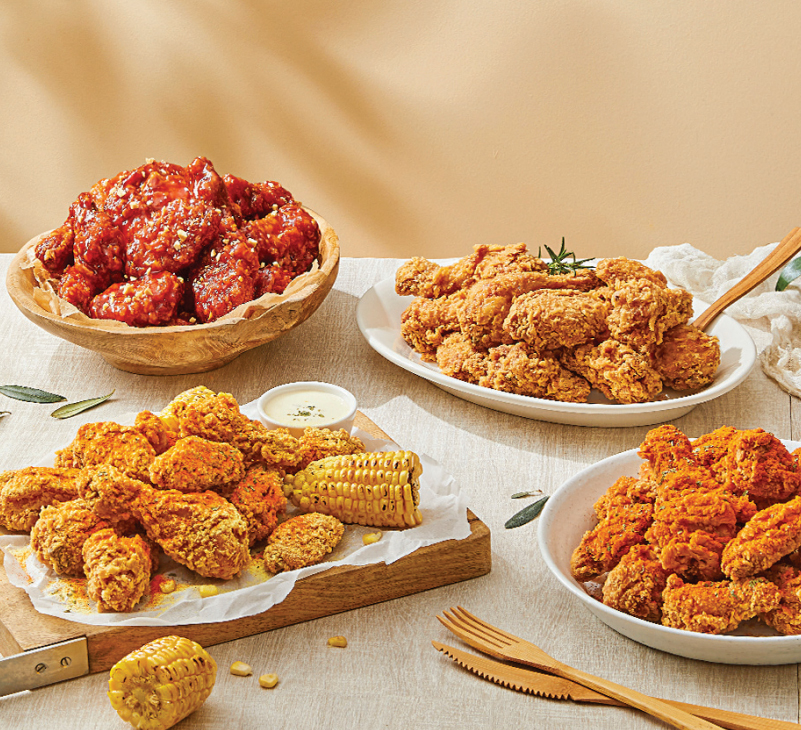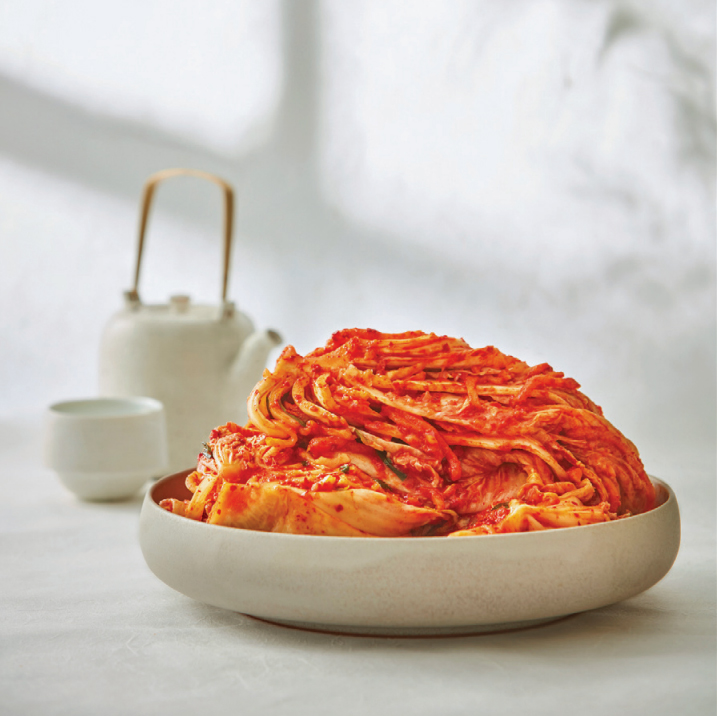ABOUT KOREA
In the fall of 2021, a certain Korean street snack became all the rage in social media across the world. The snack, dalgona, won the world’s attention after being featured in the third episode of Squid Game, as viewers sought out the snack to experience it for themselves. In the previous year, the success of the film Parasite led to the worldwide recognition of jjapaguri, also known as Ram-Don. In addition, the “Fire Noodle Challenge” had been sweeping social media for years, which involves people outside of Korea, who usually do not have as high a tolerance for spicy foods as Koreans, eating Buldak Bokkeummyeon or the “Korean Fire Noodle.”

These examples show that Korean foods have become representative of the Korean Wave along with K-Pop. More and more Korean restaurants are opening in Paris, London, New York, and other major cities with high acclaim. Korean foods also drew the attention of people around the world interested in green lifestyles, due to the wide variety of vegetable dishes. In 2004, the WHO chose Korean foods (hansik) as one of the most nutritionally balanced foods. USA Today published that kimchi was the dish expected to be the most popular in 2020, along with Vietnamese rice noodles and cabbages.

Korean food is also loved for their rich flavor. Korean food is made with a wide range of ingredients, which are prepared in ways that bring out their natural flavor. In addition, a single Korean dish offers a wide spectrum of flavors.
People’s taste in Korean cuisine grew younger as well. According to a survey conducted with 8,500 citizens across 17 major cities around the world in 2021, the largest percentage of respondents chose Korean fried chicken as their favorite Korean food (16.1%), followed by kimchi (11.3%), bibimbap (10.7%), bulgogi (6.0%), and tteokbokki (5.6%). While female and younger respondents leaned toward Korean fried chicken and tteokbokki, older respondents reported a high preference for kimchi. Outside of Korea, the images associated with hansik include “savory,” “reasonably priced,” and “healthy.” They are also perceived as “foods that became popular recently.” According to the global food magazine Chef’s Pencil, Korean foods have the fourth largest recipe hashtags after Japanese, Italian, and Indian foods. Today, many people watch YouTube clips to learn Korean Food recipes.

Korean-style chicken
Korean-style chicken with its various sauces, such as soy sauce, red chili paste, and cheese, is captivating the world’s taste buds.
These examples show that Korean foods have become representative of the Korean Wave along with K-Pop. More and more Korean restaurants are opening in Paris, London, New York, and other major cities with high acclaim. Korean foods also drew the attention of people around the world interested in green lifestyles, due to the wide variety of vegetable dishes. In 2004, the WHO chose Korean foods (hansik) as one of the most nutritionally balanced foods. USA Today published that kimchi was the dish expected to be the most popular in 2020, along with Vietnamese rice noodles and cabbages.

Kimchi
This traditional Korean fermented food boasts more than 200 kinds, depending on the region, characteristics of ingredients, and recipe.
Korean food is also loved for their rich flavor. Korean food is made with a wide range of ingredients, which are prepared in ways that bring out their natural flavor. In addition, a single Korean dish offers a wide spectrum of flavors.
People’s taste in Korean cuisine grew younger as well. According to a survey conducted with 8,500 citizens across 17 major cities around the world in 2021, the largest percentage of respondents chose Korean fried chicken as their favorite Korean food (16.1%), followed by kimchi (11.3%), bibimbap (10.7%), bulgogi (6.0%), and tteokbokki (5.6%). While female and younger respondents leaned toward Korean fried chicken and tteokbokki, older respondents reported a high preference for kimchi. Outside of Korea, the images associated with hansik include “savory,” “reasonably priced,” and “healthy.” They are also perceived as “foods that became popular recently.” According to the global food magazine Chef’s Pencil, Korean foods have the fourth largest recipe hashtags after Japanese, Italian, and Indian foods. Today, many people watch YouTube clips to learn Korean Food recipes.

